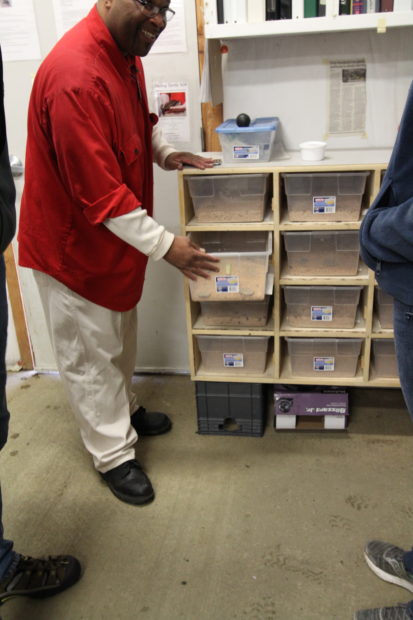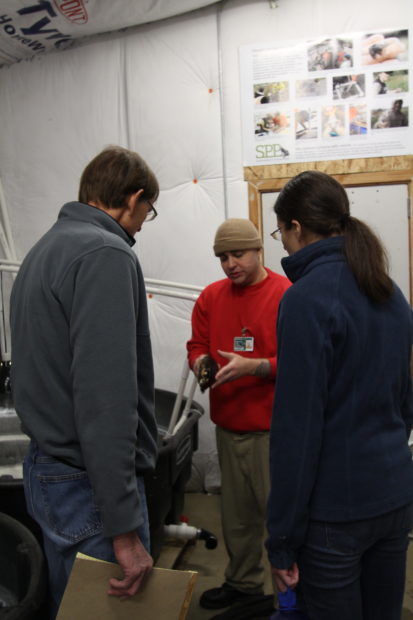Text by Jessica Brown, SPP Turtle Program Coordinator and Philip Fischer, U.S. Forest Service volunteer. Photos by Jessica Brown.

USFS trainers, SPP coordinator, and participants of the woodpecker nest monitoring project training pose with bird specimens.
In November, the Woodpecker Nest Monitoring Project at Cedar Creek was launched with a two-day training for all five turtle technicians, four greenhouse workers, and two other interested individuals. The purpose of the Woodpecker Nest Monitoring Video Review is to support a multi-year research project through the U.S. Forest Service (USFS) focused on identification of nest predators. Woodpeckers are keystone species which provide cavities not only for their own nesting use but also for a broad spectrum of secondary cavity users including small mammals and other birds. Video footage comes from cameras operating 24/7 at cavity nests. This is the only sure way to document nest depredation, however, reviewing the enormous amount of video footage requires an equally enormous amount of reviewer time. In order to accurately monitor video footage, correctly identify species, and describe animal behaviors, reviewers need considerable training.
In the past, video monitoring was typically performed by undergraduate students, however, collaboration between USFS and SPP has made it possible to bring this type of education and experience into prison.

Teresa Lorenz, USFS biologist, demonstrating a woodpecker nest cavity used for nesting.
Participants at Cedar Creek received six hours of education and training from Teresa Lorenz, USFS biologist and Phil Fischer, USFS volunteer, covering woodpecker, raptor, song bird, and small mammal identification; background information relating to the project including project protocol and species behavior descriptions; and monitoring and data recording techniques. Training was successful and it was quite impressive to see how quickly all of the students picked up on all the information given to them in such a short amount of time.

Bird and mammal specimens on display were a very a helpful tool in training.

Phil Fischer, a volunteer with the USFS, teaching the various behaviors of woodpeckers and how to document them when reviewing video footage.
Following the training, the technicians did not waste any time getting started on reviewing the video footage. So far they are doing an excellent job, especially without having Teresa or Phil at hand to answer questions on a regular basis. While the videos range from one to two hours, it is common for reviewing to take multiple hours depending on how busy the nest is. Busy nest=several data sheets!

Biological Science Technician, Modesto Silva reviewing video footage of a Northern Flicker cavity nest. This video station sits atop the mealworm rearing bins for the western pond turtle program.

The walls of the turtle shed are adorned with several bird species identification sheets.

Biological Science Technician, James Meservey collecting data on a woodpecker cavity nest.









































